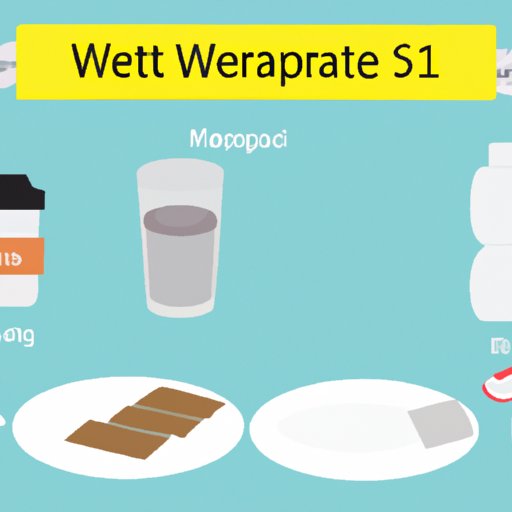Introduction
Sometimes it can be difficult to find the time or energy to exercise when trying to lose weight. But the good news is that it is possible to lose weight without exercise. While diet and exercise are both important components of a healthy lifestyle and weight loss plan, there are other ways to reach your goals. This article will explore how to lose weight in a month without exercise by focusing on key steps such as increasing water intake, eating more protein-rich foods, avoiding refined carbs, cutting back on added sugars, and tracking your calories.
Increase Water Intake
Drinking more water can be an effective way to boost your weight loss efforts. Water helps keep you hydrated and feeling full, which can lead to fewer calories being consumed throughout the day. Additionally, drinking cold water can help your body burn more calories as it works to warm the water to your internal temperature. Here are some tips for increasing your water intake:
- Keep a water bottle with you throughout the day and sip on it regularly.
- Add lemon, lime, cucumber, or mint to your water for extra flavor.
- Set a reminder on your phone to drink water every hour.
- Replace sugary drinks with water.
Eat More Protein-Rich Foods
Eating more protein-rich foods can help with weight loss in a few different ways. Protein is known to increase feelings of fullness, which can help you eat fewer calories overall. Additionally, protein takes more energy for your body to digest than carbohydrates and fat, meaning that your body has to work harder to break it down, leading to an increased calorie burn. Good sources of protein include lean meats, seafood, eggs, dairy products, nuts, and seeds.
Avoid Refined Carbs
Refined carbs, such as white bread, white rice, and sugary cereals, are quickly broken down into sugar, causing blood sugar levels to spike. These spikes can lead to cravings and overeating, which can hinder weight loss efforts. Instead, opt for complex carbs such as whole grains, fruits, and vegetables, which take longer to break down and provide more nutrients and fiber.
Cut Back on Added Sugars
Added sugars are often found in processed and packaged foods and can add unnecessary calories to your diet. Foods high in added sugars include cakes, cookies, candy, and soda. Cutting back on these types of foods can help reduce your calorie intake and aid in weight loss. Some tips for reducing added sugars include reading food labels, avoiding processed foods, and opting for natural sweeteners like honey and maple syrup.
Track Your Calories
Tracking your calories can help you stay aware of how much you’re consuming each day and make sure you’re not overdoing it. There are many apps and websites available that can help you track your calories and get an accurate picture of your daily intake. Additionally, tracking your calories can help you identify areas where you may need to cut back or increase your intake, allowing you to make changes to your diet accordingly.
Conclusion
Losing weight doesn’t have to involve extensive exercise routines. By following the steps outlined in this article, such as increasing water intake, eating more protein-rich foods, avoiding refined carbs, cutting back on added sugars, and tracking your calories, you can reach your weight loss goals without having to hit the gym. With dedication and consistency, you can make progress towards a healthier lifestyle in just one month.


